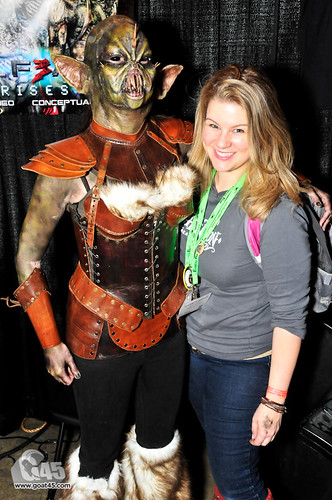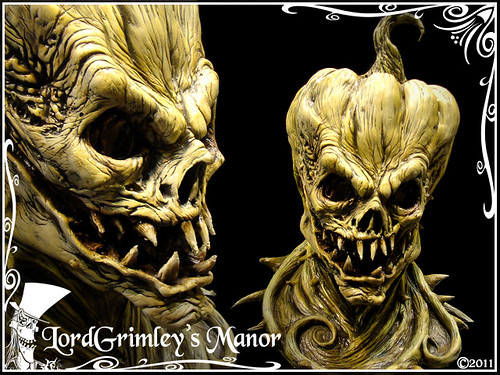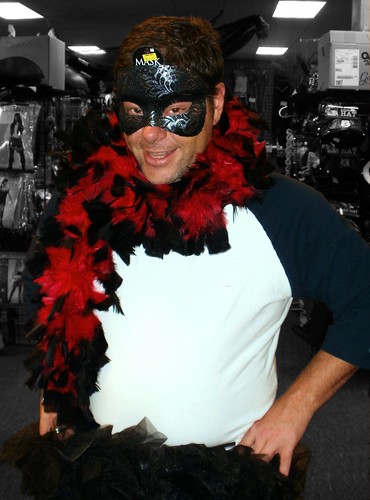8/9/12
7/12/12
Check Out White Plush Sequin Bunny Ears Costume Set ~ Bunny Rabbit Costume Kit (STC12044) for $6.88 SeasonsTrading
White Plush Sequin Bunny Ears Costume Set ~ Bunny Rabbit Costume Kit (STC12044) Review
Technical Details
- SeasonsTrading custom made bunny costume accessory set includes white plush bunny ears, tail, and bow tie
- Bunny ears are poseable with silver sequin lining. White elastic straps attached to tail & bow tie for easy wear.
- One size fits most
- Cute bunny costume accessories to wear for fun!
- Bunny Ears Set also available in black color (sold separately). Search SeasonsTrading Bunny Ears Costume Set for details.
4/25/12
Your Quinceanera Mass

Despite changing times, many families continue to encourage their young woman to attend the mass as a central part of her coming of age. In fact, the Misa de Acción de Gracis is a time for the quince girl to reaffirm her values and beliefs, especially as they regard her family, her community, and not least importantly her faith.
The Mass is also a time for the parish to recognize the young woman as an adult in the eyes of her parish.
The Quinceanera Catholic Mass Traditions
The Quinceanera girl comes to her Misa de Accion de Gracis bearing her ultima muneca, or "Last Doll." This doll symbolizes the end of her childhood and the last toy she'll have as a girl. In some traditions, she exchanges this for a bouquet of flowers to carry down the aisle to her mass.
Quince girls are accompanied to the Mass by their parents and sometimes a special set of godparents chosen especially for the occasion. While they are sometimes the godparents chosen at birth by her parents, they can also ben individuals the girl wants to include in her growing maturity.
The ceremony has all the parts of a normal Catholic Mass and also special observances. Parents and friends are invited to read important passages from the Bible. The priest says a few words about virtue and faith and blesses a rosary, Bible, and other gifts to be given to the girl at her fiesta later that evening.
There is also a "coronation ceremony" where the Quince girl's mother or godmother places a tiara on her head. This is a tribute to an ancient custom where the Quince girl was established as an official princess within her family and a young woman in her community. At the end of the service the Quince girl may leave the bouquet of flowers on the church altar as an offering of faith.
Many parishes now hold one single Misa for all their Quince girls in a given time, usually once a month. You should check with your local rectory to see if special private masses are available.
Other Faiths, Other Traditions
Historically Latino families have been almost exclusively Catholic, though many in the United States have begun accepting other faiths and denominations. There are no long-standing traditions regarding the Quinceanera celebration in other countries, but an expression of faith and devotion is still possible.
Some Quinceanera girls have chosen to hold special prayer ceremonies that allow her the chance to give thanks and praise in the company of family and friends. Others choose to spend a few moments with their parents in quiet prayer before the fiesta.
My Quince Favors has tiaras, Bibles, a complete selection of last dolls, and dozens of Quinceanera supplies and accessories. Visit them online at http://www.myquincefavors.com
4/21/12
Mardi Gras Beads - The Meaning Behind Them

Mardi Gras Beads or throws are a fun part of the Carnival festivities in New Orleans, Louisiana. The Carnival season begins on Twelfth Night or January 6th. Carnival refers to the whole season from January 6 through Fat Tuesday, which is the Tuesday before Ash Wednesday or the beginning of the Lent season. Mardi Gras generally refers to Fat Tuesday only, but many tourists describe the whole carnival season as Mardi Gras so locals began to refer to Fat Tuesday as Mardi Gras Day to alleviate any confusion. Festivities during the Carnival Season include parties or balls, parades, and king cake. Beginning two weeks before Fat Tuesday or Mardi Gras Day, there is at least one parade daily. It is during these parades that the beads or throws are primarily used.
The New Orleans parades are organized by Krewes which are member sponsored communities. During the course of the parade, the krewe members toss out a number of different types of throws such as beads, doubloons, cups, and stuffed animals or small toys. Make sure you bring a large bag, pillow case, or any other sturdy container to bring your "catch" home in.
Prior to the 1960's, the beads were made from glass; however, they are currently being made from plastic. In the early 90's, people began to tire of the thin strands of plastic beads and would actually just leave them laying on the ground so some krewe members began to throw larger beads or novelty type beads with a theme. So why throw Mardi Gras beads? There is a school of thought that the beads or representative of the jewelry that was worn by royalty. People stand on the side of the road begging trinkets. "Throw me something, Mister" is a phrase you can hear over and over again. If you catch the eye of a krewe member, they will reward you by throwing a string of beads or more to you.
Mardi Gras colors chosen by Rex, king of carnival in 1892, are purple (for justice), green (for faith), and gold (for power). Generally, Mardi Gras beads are a thin strip of beads made from plastic in one color only, but the beads can come in every color under the sun. The most prized colors to receive are the Mardi Gras colors. Strands of bead also come in a wide variety of diameters and designs. The larger the beads and the more elaborate the design, the more desirable the strand of beads.
Carnival and specifically Mardi Gras Day is a fantastic way to spend time together as a family. You can pack a picnic lunch, play ball, watch the parades, and enjoy the festivities. Because Mardi Gras Day lasts the majority of the day, wear sunscreen, bring your lunch, and make sure you have enough bags to bring home a large catch. Mardi Gras Day parades are the biggest and utilize the largest number of throws. Have loads of fun and catch a lot of Mardi Gras beads.
Craig Thornburrow is an acknowledged expert in his field. You can get free information on numerous topics including beads at http://www.whereyoucanbuy.com
4/18/12
New Moon's St Marcus Day - Is It Real?

In the film The Twilight Saga: New Moon, Bella arrives in Volterra, Italy just in time to save Edward from revealing himself as a vampire to a throng of mortals at the St. Marcus Day festival on March 19th. Attendees of the festival, clad in red, hooded robes, march in procession bearing a statue of St. Marcus to the church in the center of town. In the Twilight world, "St. Marcus" is celebrated by mortals for having rid the town of vampires, when he was, in fact, a vampire himself. Volterra is the home of the Volturri, the lawgivers of the vampire world. Marcus is one of them. Some Twilight fans wear red on March 19th to mark this holiday.
New Moon author Stephanie Meyer borrowed the fictional St. Marcus Day from the real European celebration of St. Mark's Day. She changed the date: St. Mark's Day is April 25th. Because the date coincides with observances of Easter (a moveable feast; the date varies, but it generally occurs in March or April) and a number of other Eurasian spring festivals, it is thought that St. Mark's Day is a Christianized version of a much older, Pagan observance. In the book Ostara, Edain McCoy writes, "As was done with many Pagan festivals in Europe, the early church attempted to refocus the symbolism of Ostara [the spring festival for Germanic Pagans] onto the Feast Day of St. Mark. Instead of being a festival of rebirth, the St. Mark's imagery was concentrated on death and martyrdom, through which Christian rebirth is attained."
St. Mark is traditionally considered to be the author of the Gospel of Mark in the Christian Bible. He's believed to be the companion of St. Paul, the great early Christian evangelist, that the Book of Acts of the Apostles refers to as "John Mark." A disciple of Paul, Mark is thought to have used Paul's preaching as the basis for the Gospel. He is also remembered as the founder of the Coptic Church. Coptic tradition holds that Mark appears in the Gospels as the young man who carried water to the house where the Last Supper of Jesus and his Apostles took place, as the young man who ran away naked when Jesus was arrested, and to have poured the water Jesus turned into wine at the wedding at Cana.
Mark is said to have been martyred on April 25th in the year 68 in Alexandria, Egypt. A group of local people resented his trying to turn them away from their traditional gods. They placed a rope around his neck and dragged him through the streets until he was dead. His major shrines are in Egypt and Italy. His Italian shrine is the Basilica de San Marco in Venice, which is traditionally said to be the place where Mark's remains are buried. So, he really does have a connection to Italy, though not specifically to the town of Volterra.
Perhaps because of his martyrdom, many curious traditions grew up over the centuries about the celebration of St. Mark's feast day. In seventeenth through nineteenth century England, especially in the north and the west, folklore held that the wraiths of those who would die the following year made a procession, in the order they would die, through the churchyard and into church at midnight on St. Mark's Eve. Some said the procession would be of coffins, or of headless or rotting corpses. Others said the procession would be of identifiable, ghost-like wraiths, and that one could sit and watch the procession as it went by and thus know who was going to die.
To see these wraiths, folklore claimed, one had to be fasting. Another legend held that one had to be present at the churchyard on St. Mark's Eve for three years in a row, and only in third year would one see the wraiths. Sometimes, these living watchers saw their own wraiths, and died not long after. Another superstition regarding St. Mark's Eve is that on this night, witches who had sold their souls to the devil (or written their names in the devil's book) and wished to keep their unearthly powers had to walk three times around the church backwards, peek through the keyhole, and recite certain words, or their powers would be lost.
Another traditional St. Mark's Eve activity was stirring the ashes of the hearth. If the ashes formed the shape of a shoe, someone who lived in the household would die during the year.
St. Mark's Eve was one of three nights of the year associated with the dead. The others are St. John's Eve and All Hallow's Eve. According to some legends, on these three nights those who have died can return to the earth as spirits. This belief about All Hallow's Eve (Halloween) is a Christian appropriation of the Celtic harvest festival of Samhain, the point when the veil between the living and the dead was at its thinnest, and also the halfway point between autumn and winter. Similarly, St. Mark's Eve marks the halfway point between spring and summer and is associated with the Pagan festival of Ostara. St. John's Eve, traditionally celebrated on June 23rd, is associated with the Pagan feast of Midsummer, or the summer solstice.
Not all of the legends associated with St. Mark's Eve are associated with death, though. The night was also one when young women would try to divine whom their future mates would be. There were a number of ways to accomplish this: by picking twelve leaves of sage at midnight, by walking nine times around a haystack while reciting, "Here's the sheath, now where's the knife?" or by baking a dumb-cake, eating a piece of the cake, then walking backwards to bed without saying a word (hence the word "dumb"). If a woman did any of these things, but especially if she prayed to St. Mark while doing them, she would see the shadow of, or catch a fleeting glimpse of, the man she would someday marry. However, if she went to bed without seeing such a shadow and dreamed of a newly-dug grave, that meant she would die unmarried.
These are largely English customs, though. In Italy, if St. Mark's Day is celebrated at all, it is with feasting, drinking, and/or offering bread to the less fortunate. The custom of wearing red and having a procession seems to be Stephanie Meyer's invention.
[http://erineschmidtsmith.com]
http://twilightnovelnovice.com/2009/03/19/st-marcus-day-fact-from-fiction/
4/16/12
American Television and the Effects of Popular Culture on the Society

How American society perceives itself is largely affected by television these days. A large section of the population identifies themselves through popular culture as depicted on the television; their visions are colored by the ideas that the numerous tv shows present. And we cannot be judgmental and trash them all because we are the ones who enjoy watching these shows making them huge hits with the public and helping producers make money and introduce more shows like these. Sponsors use agenda setting to promote their products and influence people's buying decisions. Suddenly, we feel our lives are incomplete without junk food, alcohol, cigarettes or expensive gadgets. But sponsors have to make money which in turn will help producers get sponsorships from them and bring out more tv shows which we enjoy. Thus the vicious cycle continues.
American tv shows has changed the ideas of people about matrimony, family, social behaviors etc. Gone are the days when there were shows like House on the Prairie, The Cosby Show, Father Knows Best, Leave it to Beaver etc where families were shown to be stable social units with the father being the sole breadwinner, the mother being the homemaker and both parents being very loving, caring and attentive towards children's needs. Divorces, child abuse, extra marital affairs were issues hardly aired on television. Nowadays, families are no longer perfect as they used to be depicted. Divorce rates have gone up; children are facing sexual abuse et all; the picture of perfect families is no longer there. Also women are no longer staying only at homes but have ventured out to pursue a career. Also friends are portrayed as people close to an individual more than families.
Apart from that, there are tv shows glamorizing the world of 'sex, drugs and rock-n-roll', rampant violence, crime etc. Drugs are often being shown as propagators of music. All these easily influence people, especially children in a negative way. Also people are so content with whatever political views that television presents that they are comfortable with the status quo and becoming more inactive socially and politically. Their senses of styles, languages, vocabulary are changing.
One cannot predict the future of the society undergoing these changes every now and then. Just as one cannot throw out the television from one's life just like that.
For more information, visit tvrage.com. They have a wide variety of show recaps and previews, including True Blood and True Blood Episode recaps.
4/13/12
Native American Face Painting Ideas

The Native American tribes had many different designs for face painting. Every tribe had it's own particular design, but each person would also paint their face reflecting a personal message or a design having personal spiritual significance. Colors normally used in painting their faces were red, black, green, white and yellow. Each of these colors had a certain meaning, red was the color of war, black the color of the living, green was meant to increase the wearer's night vision, white meant peace - i.e. flying a white flag, and yellow signified death or an encounter with death. A few tribes would associate different meanings to each color, but most of them had the same meaning for each color.
Men would often paint lines on their cheeks, foreheads, and chin. And the women used mainly dots on their faces. Often the males would separate their into two parts and paint each section differently. Most of their paintings were not very elaborate, and because the colors had signified a happening or feeling they used the color to illustrate meanings.
To create your own little Indian use some of the ideas below
Half Face Design.
1st Face. Take your sponge and red paint and paint the top half of the face ending in a straight line across the nose to the middle part of each ear. Take a medium brush and paint a blue line across the face from ear to ear. Paint another line in white below the blue line. The red paint needs to come down to these two lines. For added flare paint vertical stripes on the cheek and chin in red or black.
2nd Face.
With white paint and a sponge paint the lower half of the face. The white paint should end just below the eyes. Next take black paint and a large flat brush and paint a black stripe from ear to ear across the eyes. The top of the strip should cover the eyebrows ending in line with the tip of the ears. The bottom should be straight below the eyes and then slant down and end three fourths of the way down the ear. Black paint can also be applied to the lips. With a large round brush paint two vertical red lines on each cheek. Then take a small brush and paint a small white line across the forehead, above the black paint and you're done!
For girls a small feather or two on the cheek bone looks very pretty. Start with white paint and paint the white of the feathers. The edges should be a bit rough or jagged and the end should come down to a point. The shape of the feather can also be slightly curved. Draw a thin black line in the middle of each feather and then paint the lower half of the feather black. For a more natural effect let some of the white paint show through the black. Take the white paint again and paint two short lines or ribbons attached to the end of each feather. Edge the ribbons with black paint.

